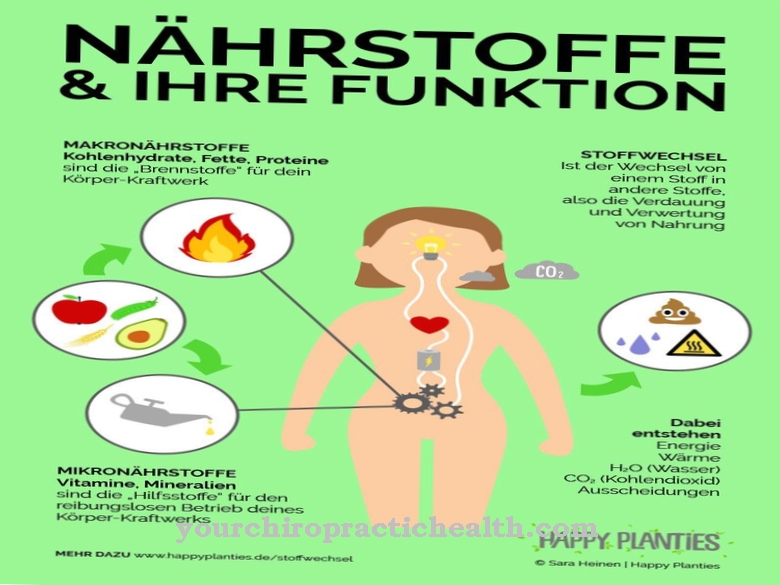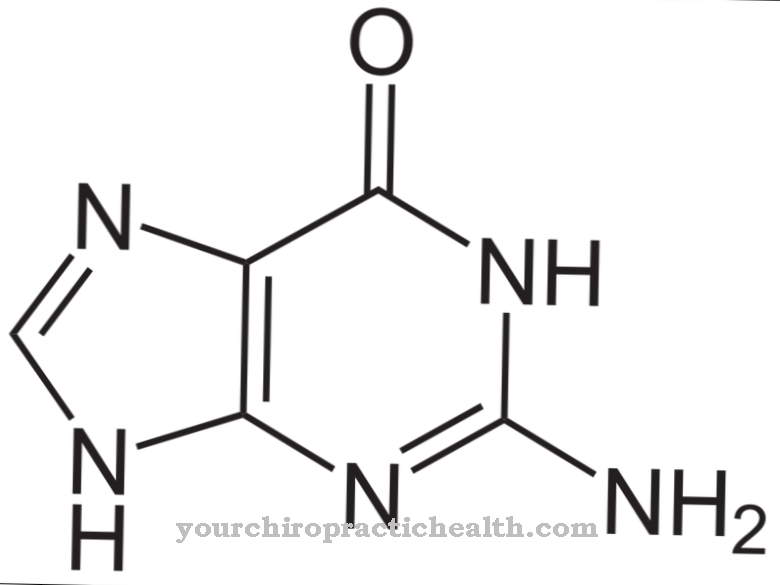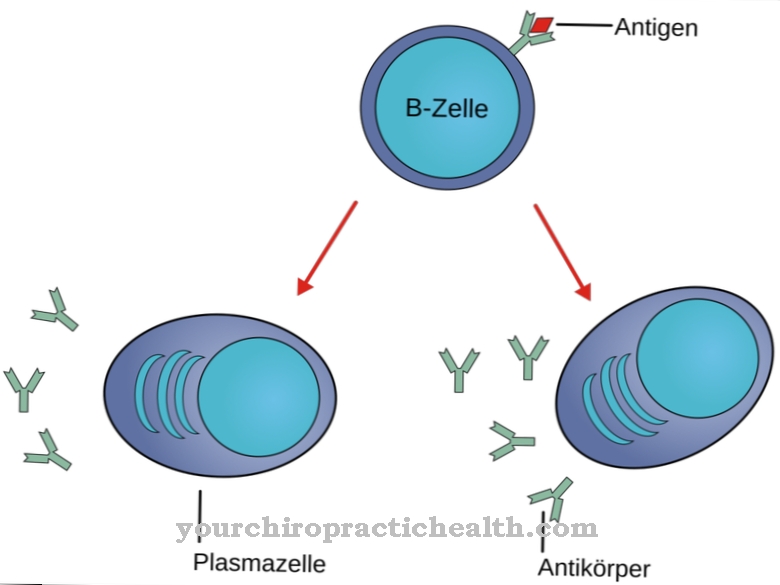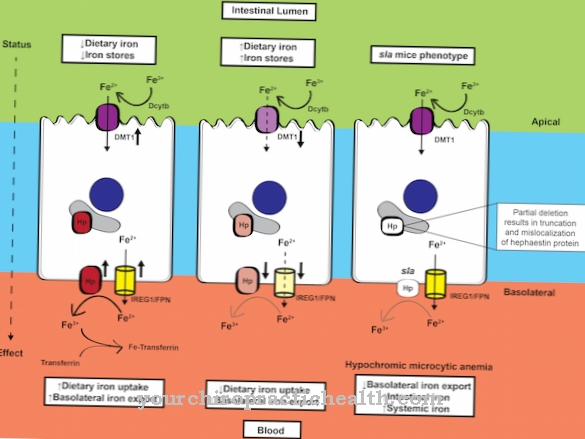Cytidine belongs to the nucleosides and is made up of the nucleic base cytosine and the sugar ribose. It forms a base pair with guanosine via hydrogen bonds. It also plays a central role in pyrimidine metabolism.
What is cytidine?
Cytidine is a nucleoside that consists of cytosine and ribose. In addition to adenine, guanine and thymine, the nitrogen base cytosine is involved in the synthesis of nucleic acids. Phosphorylation of cytidine produces cytidine monophosphate (CMP), cytidine diphosphate (CDP) or cytidine triphosphate (CTP).
Cytidine monophosphate is a nucleotide in RNA. Two purine and two pyrimidine bases are involved in the structure of the nucleic acids, with thymine being exchanged for uracil in the RNA. Adenine and guanine belong to the purine bases, while thymine, cytosine and uracil belong to the pyrimidine bases. Cytidine deaminase can deaminate cytidine to uridine. Uridine is a nucleoside made from ribose and uracil. It can also be phosphorylated to uridine monophosphate.
Uridine monophosphate is also an important nucleotide for RNA. Furthermore, CDP and CTP are also activating groups for the synthesis of lecithin, cephalin and cardiolipin. The pure cytidine is present as a water-soluble solid that decomposes at 201 to 220 degrees. It can be catalytically degraded to cytosine and ribose by the enzyme pyrimidine nucleosidase.
Function, effect & tasks
Cytidine plays a central role in pyrimidine metabolism. Pyrimidine provides the basic structure for the pyrimidine bases cytosine, thymine and uracil that occur in nucleic acids. Thymine in the RNA is exchanged for uracil.
Uracil is also produced by the deamination of cytidine with cytidine deaminase. The chemical conversions between the three pyrimidine bases are of central importance for the repair processes in the DNA and the epigenetic changes. In the context of epigenetics, various properties are modified by environmental influences. However, the genetic material does not change. Modification changes of an organism are caused by the different expression of genes. Differentiation processes of the body cells for the formation of different cell lines and organs also represent an epigenetic process. Depending on the cell type, different genes are activated or deactivated.
This takes place through the methylation of the cytidine bases within the DNA. During methylation, methylcytosine is formed, which can be converted into thymine by deamination. The complementary nucleobase guanine in the opposite double strand enables the error to be recognized and thymine to be exchanged for cytosine again. However, guanine can also be exchanged for adenine, which leads to a point mutation. If the unmethylated cytosine is deaminated, uracil is produced. Since uracil does not appear in DNA, it is immediately replaced by cytosine. Instead of cytosine, the mutation rate due to methylation is slightly increased.
At the same time, however, more and more genes are switched off through methylation, resulting in further specialization of the cells within the cell line. In repair processes, the repair enzymes are based on the original DNA strand, which they recognize through a higher degree of methylation. The complementary strand is also built on the basis of the information stored there. Installation errors are corrected immediately. Furthermore, the enzyme AID (Activation Induced Cytidine Deaminase) very specifically catalyzes the deamination of cytidine groups to uridine groups in single-stranded DNA. Somatic hypermutations occur, which change the antibody sequences of B cells. Then the matching B cells are selected. This enables a flexible immune response.
Education, occurrence, properties & optimal values
Cytidine is an intermediate product of the pyrimidine metabolism. As an isolated connection, it doesn't matter. As already mentioned, it is composed of the nucleic base cytosine and the quintuple sugar ribose. The body can synthesize cytosine itself.
However, its synthesis is very energy-intensive, so that it is recovered from nucleic acid building blocks within the framework of the salvage pathway and can be reintegrated into nucleic acids. When the base is completely broken down, carbon dioxide, water and urea are produced. It is present as a nucleoside in the RNA. In the DNA, cytosine is bound to deoxyribose, so that the nucleoside deoxycytidine occurs here as a building block.
Diseases & Disorders
The methylations on the cytidine residues of DNA are very important for markings in order to separate different biochemical processes. However, errors can also occur in methylation that lead to disease.
In the case of defective methylations, both increased and decreased gene activities can be triggered that do not meet the requirements. These methylation patterns are passed on during cell division. In the long term, changes occur that can lead to diseases. For example, some tumor cells have different methylation structures that do not occur in healthy cells. For example, methylation can block certain genes that code for growth-regulating enzymes. If these enzymes are missing, uninhibited cell growth can occur. This also applies to enzymes that initiate orderly cell death (apoptosis) when cell defects occur.
A targeted influencing of DNA methylation is not yet possible today. However, there are studies on the complete demethylation of tumor cells in order to subject them again to the control of the growth-regulating proteins. According to several clinical studies, demethylation has been shown to limit tumor growth in patients with acute myeloid leukemia. This procedure is also known as epigenetic therapy. Methylation processes may also play a role in other diseases. Due to environmental influences, the organism adapts to changed conditions with the formation of biological modifications based on methylations of the cytidine residues of the DNA. The body thus carries out a learning process, which can, however, also cause incorrect regulation.








.jpg)



















